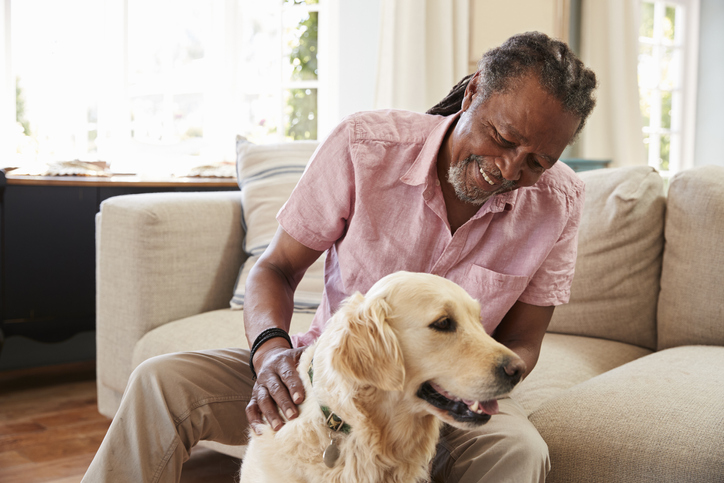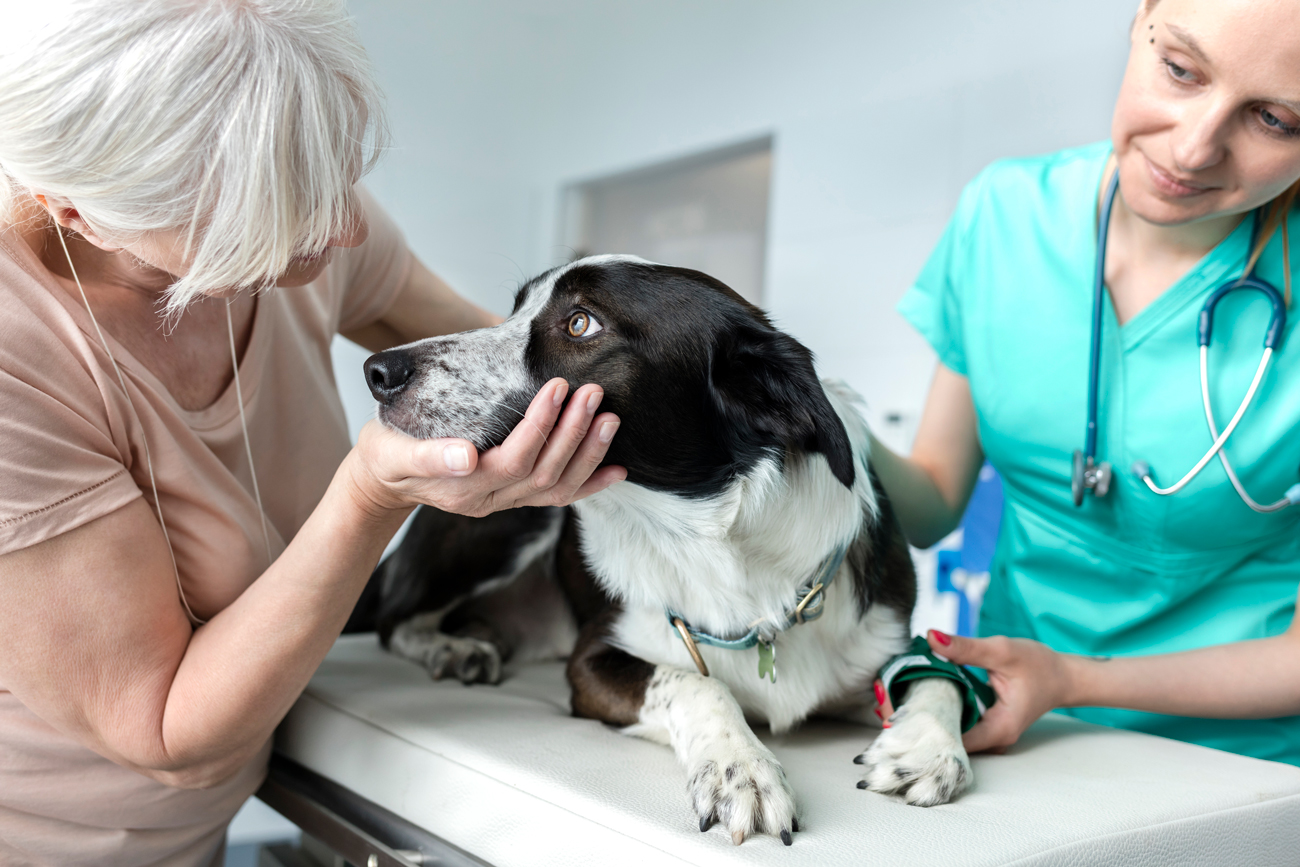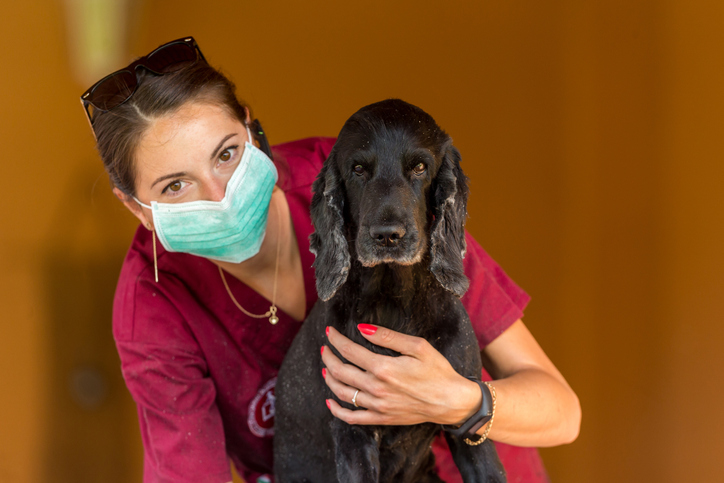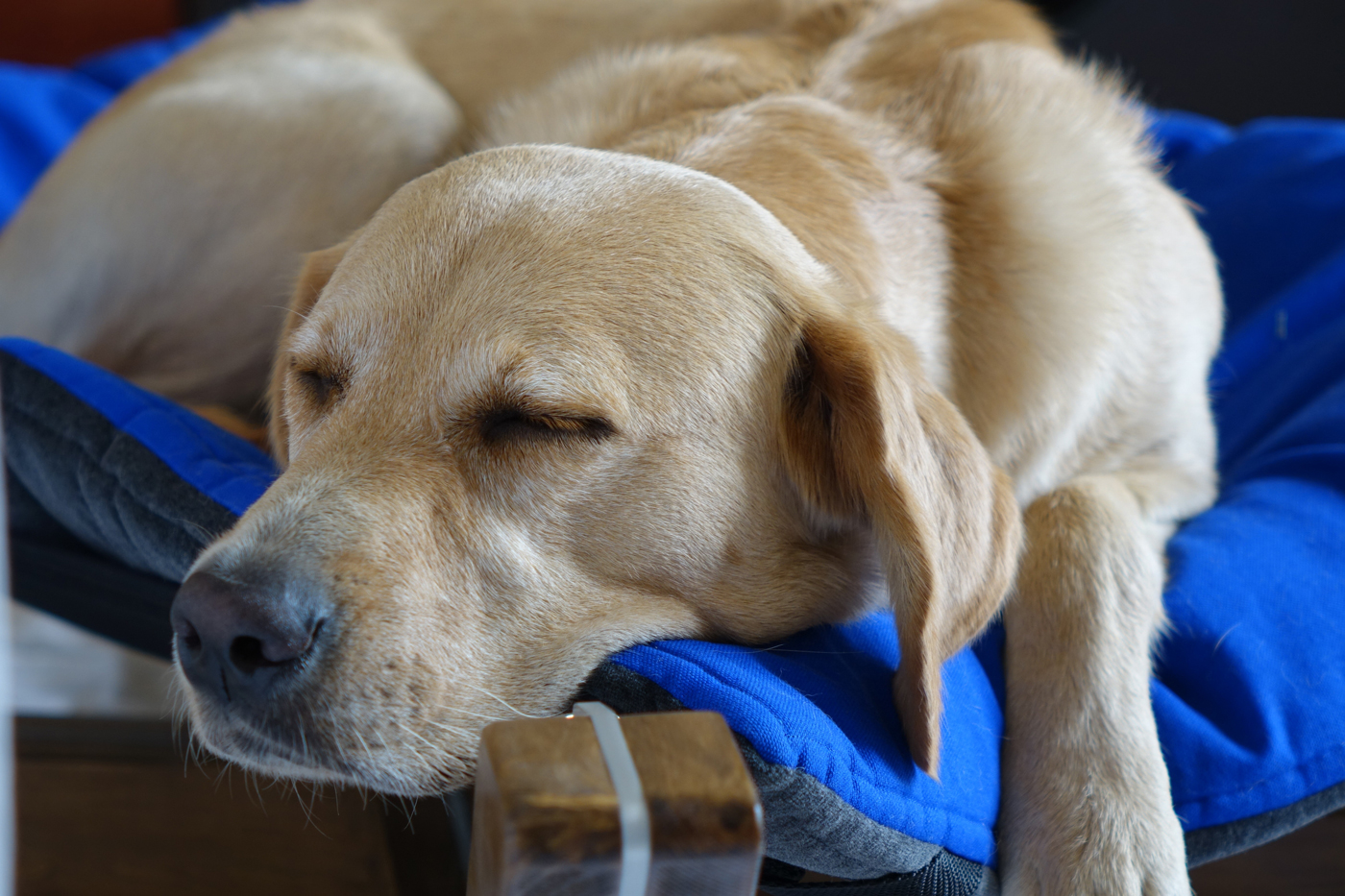
How to massage an older dog
15th September, 2021
Hanging out with an old four-legged friend is great fun, but from long walks to cuddles on the sofa sometimes aches and pains can get in the way of quality time.
Massaging your older dog might not be something you’ve thought about before, but many owners are finding that it’s something their senior dog now appreciates.
Indeed, amongst the day-to-day practicalities of arranging older dog insurance, taking them for walks, feeding, and cleaning up after them, a dose of doggy massage could be a welcome relief for you both.
It’s a wonderful way for you to bond and spend time with each other. So, here’s a rundown of some of the essentials of older dog massage and what you can do if you want to try it out.
What is a dog massage?
Put simply, dog massage is a non-invasive, hands-on therapy where you rub and knead the muscles and joints of your dog’s body to relieve pain, discomfort, muscle spasms and stress.
It not only reduces physical and emotional anxiety, but also helps mobility, promotes relaxation and aids in the healing of muscles, joints and bones.
Your humble hound has around 350 pairs of muscles pulling on the 320 bones to produce all that wonderful range of movement. So, it’s no wonder massage is one of the most effective ways to maintain your dog’s muscles for movement, mobility and longevity!
Many vets now prescribe canine massage to help recovery following surgery, to help in rehabilitation and to reduce pain.
Indeed, such is the growing popularity of canine massage that owners can now complete courses in the discipline. While there are also formal qualifications in canine massage that veterinary staff can work towards.
Whether it’s a small improvement or a dramatic one, canine massage could make a big difference to your older dog’s quality of life. If you’re interested in taking a course then take a look at those on offer at the Canine Massage Therapy Centre.

What are the benefits of dog massage for an older dog?
Here are the top reasons why giving your faithful pup a massage is a great idea:
Stress and anxiety reduction
As dogs age they can easily become more stressed or anxious. Whether it’s loud noises, a thunderstorm, parcel deliveries, or being left alone there are many situations that could make your pet nervous or restless.
The effect of hands-on contact could certainly help ease your dog’s tension and help them relax and forget their worries. Even the most anxious of canines has been found to benefit from massage.
Aid to healing
Whether your dog has undergone surgery or injured themselves, your vet may prescribe a massage. Massage can help their rehabilitation, pain and swelling reduction, and keep scar tissue to a minimum.
It can also rebuild and repair muscles faster after strains and sprains. Always speak to your vet first to make sure a massage is appropriate. They can also advise you on how to do this properly and safely.
Relieves arthritis
Gently rubbing sore muscles and joints can increase circulation and help relieve arthritis. Take care not to press too hard, and stop if your pet flinches, moves away, or growls.
Improves bodily functions
Massage is known as an holistic therapy that affects the entire body system.
This can include: increasing circulation; decreasing blood pressure; strengthening the immune system; aiding digestion; stimulating the kidneys and liver; and encouraging deeper breathing. Almost any health problem your dog has could be improved by a dose of regular massage.
Helps pre- and post- exercise
As a dog gets older, they might not be able to exercise in quite the same way as they used to.
By doing a pre-exercise warm-up massage you can help prevent injury and post-exercise soreness.
After exercise, a massage could also help relieve any stiffness and pain they are experiencing.
Promotes wellbeing
Humans feel refreshed, balanced, and revitalised after a good massage, so why wouldn’t your older dog, too?
Strengthens your relationship
Just as with grooming, massaging your dog will help develop an even deeper relationship and emotional connection between you.
After spending many happy years together, it’s important not to take your relationship for granted.
Basic techniques of dog massage – a beginner’s guide
There are many different methods you can use to perform massages on your older dog. Most use a combination of the following basic massage techniques.
- Effleurage – You probably already use this technique as part of your everyday activity with your dog. It involves using long, continuous strokes along your dog’s body. Usually performed at the beginning and end of a massage session. It’s a great way to warm up the muscles and relax your dog.
- Petrissage – Similar to the action of kneading bread dough, here you lift up and gently twist the skin and tissue. It helps increase blood circulation and elasticity and is particularly effective in the neck and shoulder area.
- Compression – Simply laying your hands or fingers on their skin and applying a slight pumping motion. It’s often used to help relieve muscle spasms and increase circulation. It’s a popular technique to relieve arthritis or pain. Never use hard force and always go gently on sensitive areas.
- Friction – Can help loosen joints, tendons and muscles as well as increasing blood circulation. Usually applied in a circular motion using your thumb and fingertips or the palm of your hand.
While there are many other techniques used during massage, these basics are all that is needed for a relaxing and enjoyable at-home session.
Always remember that giving a dog massage is very different from giving a massage to another human.
If you’re too rough then you might upset them. Always use gentle motions and techniques to make sure they’re happy and comfortable.

How to give your older dog a massage
If you would like to start using massage as part of your older dog’s daily care then follow these easy steps.
Always make sure your dog is feeling calm before beginning a massage session. Starting when your dog is feeling anxious or fearful is not likely to improve the situation – particularly if they’re not used to it.
Step 1: Pick a quiet spot in the house where your dog feels relaxed. Start the massage by gently stroking your dog all over using effleurage. Be sure to take note of any areas of swelling, increased sensitivity or pain. Always stop if your dog seems in pain. Talk softly to your dog to keep them calm and relaxed.
Step 2: Using circular motions, gently massage your dog’s head, neck and down toward their shoulders. Dogs can’t reach this area of their body, so take a little extra time here! You can gently increase pressure if they seem to be enjoying it, but never press down directly on bones or joints. If they are uncomfortable with an area being touched then move on to elsewhere.
Step 3: Now move to the chest and front legs. Dogs don’t always like their legs being massaged. But, if yours does, see if they want their paws massaged, too. Take care with the pads as many dogs have an automatic ‘kick’ reflex if anything touches between the paw pads.
Step 4: Massage your dog’s back using circular motions, going up and down on both sides of the spine.
Step 5: Finally move onto the back legs and tail area. Some dogs enjoy having their legs gently bent and stretched, others don’t. As we’ve said previously, only do what your dog seems happy with. Forcing the issue could leave them feeling worse rather than better.
If your dog enjoys grooming then consider adding it as part of a massage session. Since your dog is already calm and relaxed, it might be a good time to brush their coat, clean their teeth or clip their nails.
A useful side-effect of performing regular massages on your older dog is that you’ll get more in tune with how they’re feeling and what’s normal for them.
In future massage sessions, you’ll be able to notice any differences in your dog’s reactions, which might alert you to any health issues that might be developing.
After all, having older dog insurance is only part of the equation when it comes to health care. Being aware of any changes means you can quickly get them the right treatment at the earliest opportunity.
For example, if you find a lump or bump could you tell the difference between something benign or something malignant? Read our guide to skin lumps on older dogs so you can tell the difference.
If you’re massaging your dog as part of injury rehabilitation then your vet will probably give you techniques specific to your dog’s injury and recovery. Be sure not to start a massage session for injury rehabilitation without instructions from your vet.
When not to massage your older dog
While there are many times a massage will be beneficial, it is not in all cases. Indeed, sometimes massage may even be harmful. For example, if your dog has an infectious disease, a broken limb or lumps of unknown type and origin.
You should also avoid massage of surgical sites unless you’ve been advised to do so by your vet as part of a post-operative program.
We hope this article will help, but if you need further assistance then it might be time to call on a veterinary professional. If you’ve got older dog insurance in place with Petwise you’ll be able to call our 24-Hour Vet Helpline for advice and guidance.

Other ways to help your older dog’s sore muscles
The pet market is full of gadgets, accessories and foods for older dogs that could be worth investing in, too. A handful worth considering include:
- Super comfy dog bed – As your dog gets older they might lose muscle mass, get stiffer joints and spend more time in bed than before. So, it’s important to check their bed has enough padding, provides enough space to stretch out and is positioned away from draughts. In their sunset years a restful night’s sleep is more important than ever.
- Raised food and water bowls – Reaching down to eat and drink can be a struggle for an aging pooch and can be made more difficult by a range of health conditions. Check their food and water bowls are at the correct height for their size. So they can easily access them without causing undue stress to their body.
- Gadgets and accessories – From portable steps and ramps to help your dog get up to and out of favourite places, to traction socks for slippery floors and support harnesses to help with mobility issues, there are many ways to make life easier for senior dogs. Read our guide for some of our recommendations for the best gadgets and accessories for older dogs.
- Supplements and diet – Providing the right diet to suit an older dog’s changing needs is an important part of responsible dog care. Your vet will be able to advise you on the most suitable pet food formulation. They should also be able to tell you whether your dog would benefit from the addition of supplements to their diet.
Protect your pooch with Petwise today
We know it takes time and effort to achieve the very best level of care for your senior dog. Indeed, as your canine gets older, its health needs are only likely to increase. That’s why the caring team at Petwise have ensured there’s no upper joining age limit for taking out insurance cover with us.
We now offer a choice of seven cover levels for older dog insurance to suit all budgets and doggy needs. Dental cover is also included as standard on all policies, and there’s even a contribution towards specialist senior pet food, too.
If you need to make a claim, our friendly UK-based team is always there to help. And when your dog reaches the end of their happy life we also provide a bereavement helpline and farewell cover to help you through.
Finding insurance for an older dog is easy with Petwise – get a quick quote today.
Policy benefits, features and discounts offered may very between insurance schemes or cover selected and are subject to underwriting criteria. Information contained within this article is accurate at the time of publishing but may be subject to change.